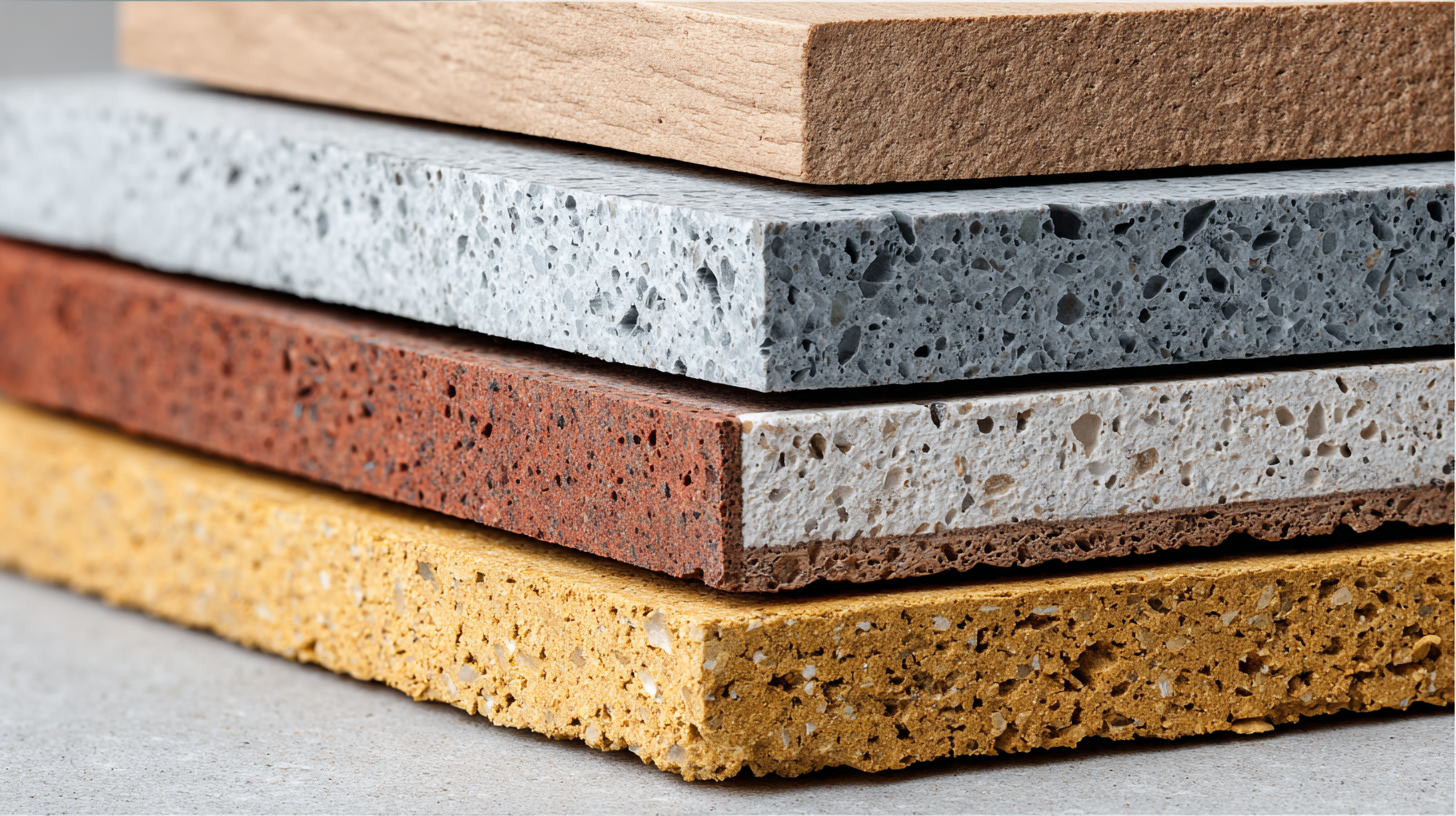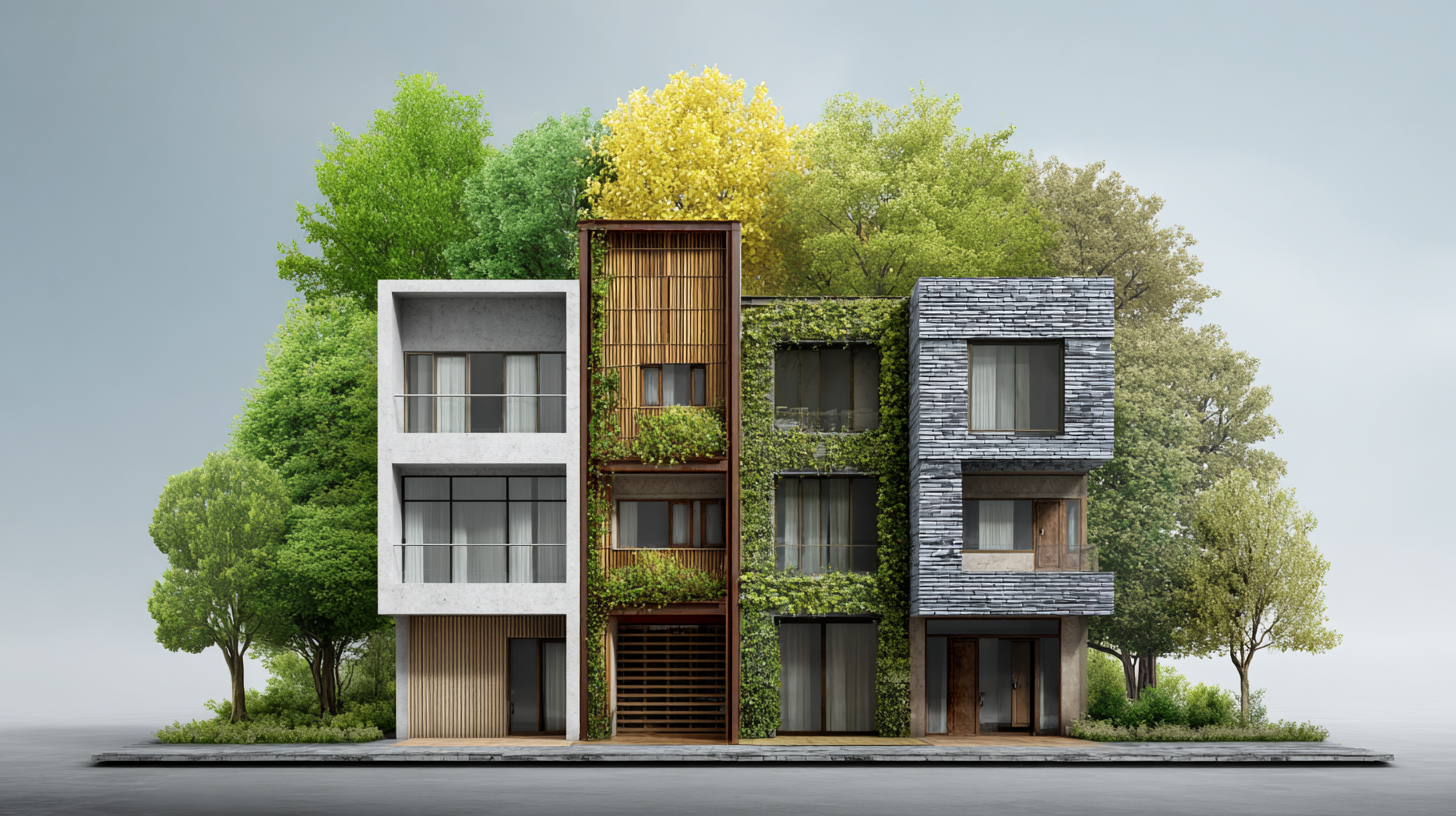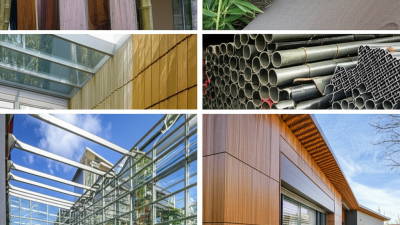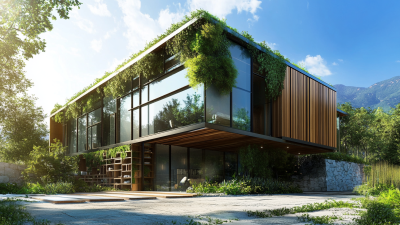Natural beauty for your favorite space
Your Ultimate Guide to Choosing Sustainable Building Materials for Eco Friendly Homes
In recent years, the demand for Sustainable Building Materials For Homes has surged as more homeowners and builders prioritize eco-friendly construction practices. According to a 2022 report by the World Green Building Council, buildings account for approximately 39% of global carbon emissions, highlighting the urgent need for sustainable alternatives in the construction sector. Utilizing materials that minimize environmental impact not only supports the planet but also enhances indoor air quality and energy efficiency. A study from the U.S. Green Building Council indicates that green building practices can result in energy savings of up to 30%, while also increasing property values. As we delve into this ultimate guide, we will explore the best sustainable building materials available, their benefits, and how you can incorporate them into your eco-friendly home projects, ensuring a sustainable future for generations to come.

Understanding the Importance of Sustainable Building Materials in Eco-Friendly Homes
Sustainable building materials play a crucial role in the construction of eco-friendly homes, as they significantly reduce the environmental impact associated with traditional building practices. By opting for materials that are sourced responsibly, energy-efficient, and have a low ecological footprint, homeowners can contribute to the conservation of natural resources and the promotion of biodiversity. This shift not only helps mitigate climate change but also enhances the overall health and safety of living environments.
The importance of these materials extends beyond just environmental benefits; they also promote long-term economic savings. Using sustainable materials often leads to lower energy costs due to enhanced insulation and reduced reliance on energy for heating and cooling. Furthermore, many sustainable options, such as reclaimed wood or recycled metal, not only reduce waste but often offer unique aesthetic qualities that can enhance the beauty and value of a home. As the demand for greener living spaces continues to grow, choosing sustainable building materials has become an essential consideration for anyone looking to create an eco-friendly home.
Your Ultimate Guide to Choosing Sustainable Building Materials for Eco Friendly Homes
| Material Type | Sustainability Rating | Recyclability | Carbon Footprint | Durability |
|---|---|---|---|---|
| Bamboo | High | Yes | Low | 15-20 years |
| Recycled Steel | Very High | Yes | Very Low | 50+ years |
| Reclaimed Wood | High | Yes | Moderate | 30-100 years |
| Straw Bale | High | Limited | Moderate | 30-50 years |
| Cork | Very High | Yes | Low | 20-30 years |
Key Characteristics to Look for in Sustainable Building Materials
When selecting sustainable building materials for eco-friendly homes, it is crucial to focus on key characteristics that ensure both environmental responsibility and durability. First, prioritize materials that are sourced sustainably, meaning they are harvested or produced in ways that have minimal impact on the environment. Look for certifications that verify sustainable practices, such as Forest Stewardship Council (FSC) for wood products or other recognized green building certifications.
Another important aspect is the lifecycle of the materials. Sustainable options should demonstrate durability and require minimal maintenance, reducing the need for replacements over time. Additionally, consider materials that have low embodied energy and carbon footprints, as these contribute to overall building sustainability. Recycled materials, like reclaimed wood or recycled metal, not only reduce waste but also lower the demand for new resources, making them ideal choices for eco-conscious builders. By focusing on these key characteristics, you can contribute to a greener future while creating beautiful, durable, and energy-efficient homes.

Top Sustainable Materials for Eco-Friendly Construction Projects
When it comes to eco-friendly construction projects, the selection of sustainable materials is crucial for minimizing environmental impact. According to the World Green Building Council, buildings are responsible for 39% of global carbon emissions, emphasizing the need for sustainable practices in the industry. Top sustainable materials include bamboo, which grows rapidly and absorbs significant levels of carbon dioxide, making it a highly renewable resource. This material offers not only durability but also a modern aesthetic, appealing to contemporary design trends.

Another sustainable option is reclaimed wood, which repurposes materials from old structures, thereby reducing waste and the demand for new lumber. The American Wood Council reports that using reclaimed wood can save approximately 700 kg of CO2 emissions for every cubic meter of timber recycled.
Additionally, using cork as flooring or insulation can be beneficial; it’s harvested from the bark of cork oak trees without harming the trees themselves, enabling them to continue photosynthesis and absorb CO2. These materials not only contribute to a lower carbon footprint but also promote a healthier indoor environment by reducing the presence of toxic substances often found in conventional building materials.
How to Source and Assess the Right Sustainable Building Materials
When it comes to sourcing sustainable building materials, the first step is to understand the various options available. Look for materials that are locally sourced, as this reduces transportation emissions and supports the local economy. Reclaimed wood, bamboo, and recycled metal are excellent choices that not only minimize environmental impact but also add unique character to your home. Ensure that the materials you select have certifications, such as FSC (Forest Stewardship Council) for wood products, which guarantees responsible forest management practices.
Assessing the right sustainable materials involves evaluating their lifecycle impact. Investigate the energy efficiency of the production process and the durability of the materials. Consider opting for products with low embodied energy and those that require minimal maintenance over time. Additionally, prioritize materials that improve indoor air quality, like non-toxic paints and low-VOC finishes. By thoroughly researching and selecting your building materials, you can create an eco-friendly home that aligns with your sustainability goals while also delivering long-term performance and aesthetic appeal.
Your Ultimate Guide to Choosing Sustainable Building Materials for Eco Friendly Homes
This bar chart illustrates the carbon footprint associated with various sustainable building materials, measured in kilograms of CO2 per 1000 square feet. Materials such as bamboo have a significantly lower carbon footprint compared to recycled steel, making them more environmentally friendly choices for eco-friendly homes.
Tips for Balancing Cost and Sustainability in Your Building Choices
When building an eco-friendly home, balancing cost with sustainability is essential. According to a report by the National Institute of Standards and Technology, incorporating sustainable building materials can lead to long-term savings of up to 20% on energy costs, as these materials typically offer superior insulation and efficiency. However, upfront costs can be a concern.
For instance, bamboo flooring, renowned for its eco-friendliness, can be more expensive initially than traditional hardwood. Yet, it can last longer and requires less maintenance, making it a wise investment in the long run.
To effectively balance these aspects, it's crucial to assess your priorities and budget. The U.S. Green Building Council notes that certified green buildings can achieve a higher resale value—up to 7% more than conventional homes, which can offset the initial higher expenditure on sustainable materials. Moreover, local sourcing of materials can reduce transportation costs and environmental impact while supporting the community. By considering these factors, homeowners can make informed choices that align with both their financial and environmental goals, ensuring a sustainable future without compromising on quality or budget.
Related Posts
-

Revolutionizing Construction with Sustainable Materials Amidst Rising Tariffs on Chinese Products
-

Exploring Unique Features and Applications of Top Sustainable Building Materials for Modern Homes
-

Challenges Faced by Global Buyers in Sourcing the Best Sustainable Building Products
-

Advantages of Choosing Eco Building Products for Sustainable Construction Solutions
-

Advantages of Choosing Sustainable Construction Materials for Global Buyers
-

Unlocking the Advantages of Sustainable Building Materials for Modern Homes
